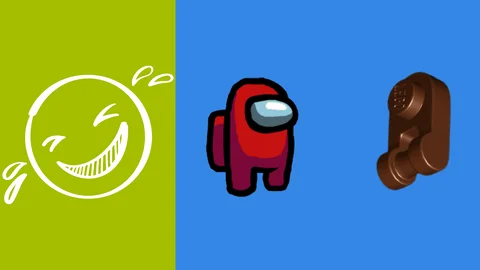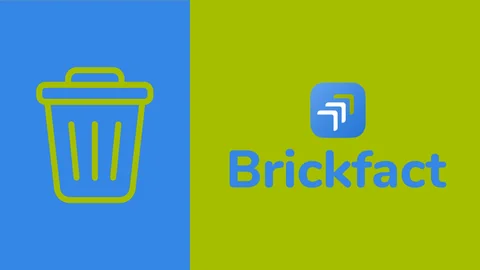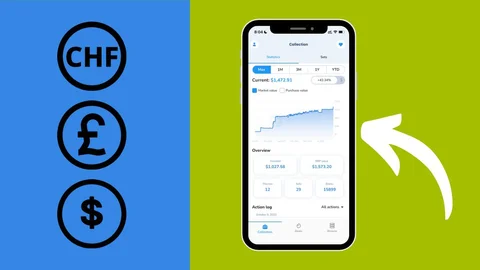Are you a LEGO® fan and want to learn more about the term "Part Out Value" (POV)? No problem, we'll explain it to you! In this article, we'll dive deep into the world of individual LEGO parts and their value. So, stay tuned to learn how you can find out the Part Out Value of a LEGO set.
Part Out Value - What is it?
Maybe you've heard the term "Part Out Value" or POV for short, but you're not sure what it means. Don't worry, we'll clear it up. Part Out Value refers to the potential value of a LEGO® set if you sold all of its individual parts separately. This means you break the set down into its component parts and resell each part separately. The sum you get from this is then the Part Out Value.
How to determine the Part Out Value?
Calculating the Part Out Value can be a little complex, but we'll show you how. Let's take a look at an example: Let's say you own the LEGO® set "Boutique Hotel" from the Modular Building series and you want to find out its Part Out Value. Here are the steps you can follow:
Step 1: The set number
First you need the set number of the LEGO set you want to know the Part Out Value of. You can usually find this number on the packaging of the set or in the LEGO manual. For the Boutique Hotel the number is 10297.
Step 2: Online marketplace
Go to an online platform that allows you to sell LEGO parts. One of the most popular portals for this is "Bricklink." You don't need an account here to look up the part out value.
Step 3: Set input
On the Bricklink page click on "Market" and then on "Price Guide" until you reach the page below. Here you can enter the set number and then click on "Get Value".
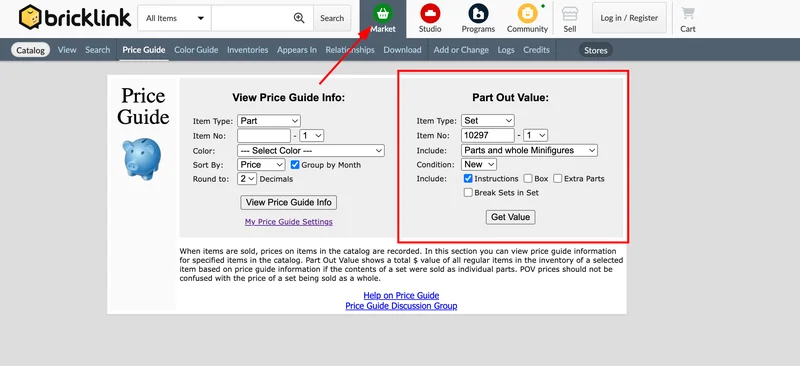
Step 4: Use correct value
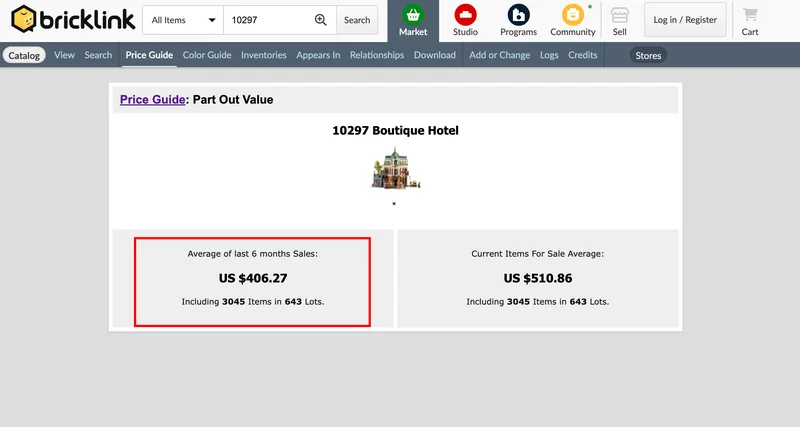
Now you can read 2 different Part Out Values. The left value is based on the sales of the last 6 months and is therefore also recommended. The right value is only based on current sales and is therefore subject to greater fluctuations. This is quite time-consuming, when you can quickly find out a POV for a set. We therefore have another faster option for you.
Read Part Out Value easily on Brickfact
The easiest way to find out the Part Out Value of any set quickly: Just search for the set on Brickfact and read the value on the set's page (page of the Creator Expert Boutique Hotel). By the way, Brickfact is also available as a free app for iOS and Android.
Part Out Value at LEGO Investments
Part Out Value (POV) plays a critical role in LEGO® investing. If you are a LEGO investor and aim to trade profitably, understanding Part Out Value is essential. It allows you to determine the potential value if you plan to sell out the LEGO set and sell the parts. This knowledge is extremely useful in making informed decisions about which sets to add to your collection and which ones you could potentially break up for future profit. Part Out Value thus serves as a guide for LEGO investors to better assess the profitability and potential of their collection. We already have an article on the LEGO sets with the highest Part Out Values.
What you should know about the Part Out Value
Before you set out to disassemble LEGO® sets and sell the parts, there are a few important things to consider:
1. Effort and Storage
Selling individual parts takes time and effort. You have to sort the parts and make sure they are well stored so they stay in perfect condition.
2. Condition of the parts
Damaged parts have a lower value. When you buy sets, make sure they are in good condition, especially the packaging.
3. Potential profit
The Part Out Value is the potential profit you could make. Note, however, that not all parts sell quickly, and some may wait longer for buyers.
4. Fun vs. Investment
Think carefully about whether you collect and build LEGO® sets just for fun or if you see them as a long-term investment. Disassembling sets can detract from the fun of collecting them.
Overall, Part Out Value provides an interesting way to determine the value of your LEGO collection and potentially make a profit. However, remember that it also comes with effort.
We hope this article has helped you better understand the term "Part Out Value" and how to determine it. You may even be inspired to take a closer look at your LEGO collection. Have fun building and collecting!

